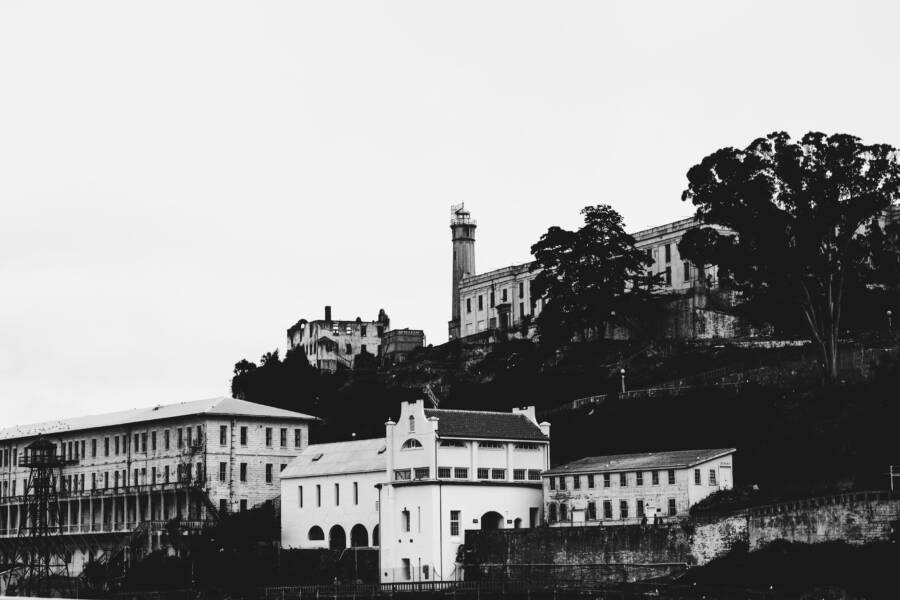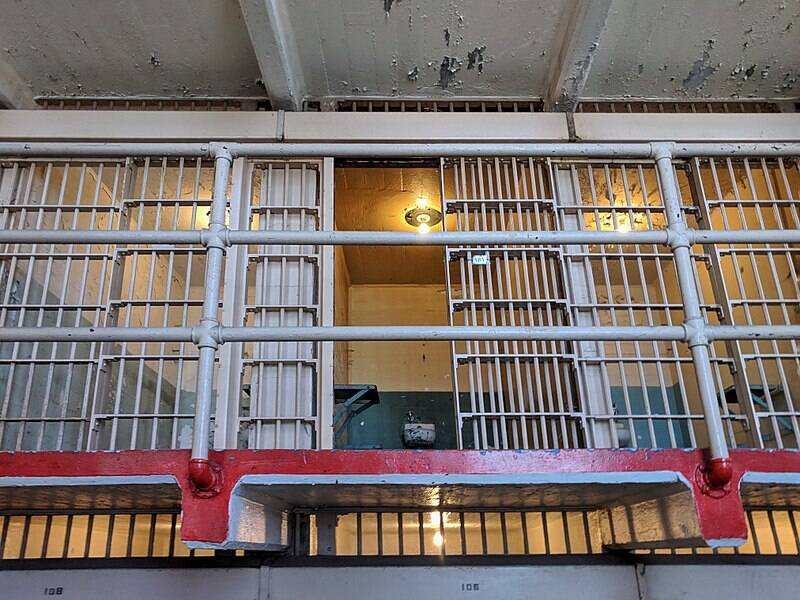Notorious Alcatraz prisoners like Al Capone, Machine Gun Kelly, and Doc Barker contributed to the fearsome reputation of "The Rock" during its run as a federal penitentiary between 1934 and 1963.

UnsplashAlcatraz Island, the notorious former maximum-security prison in San Francisco Bay.
Between 1934 and 1963, Alcatraz Federal Penitentiary was one of the most feared prisons in the United States. Its location in the middle of San Francisco Bay, surrounded by rough, frigid water, made it virtually impossible for any prisoners to escape from.
Because of this, many inmates who were exceptionally violent or high-profile or who had a history of escaping were sent to the island prison. However, the fact that prison was considered inescapable didn’t stop 36 prisoners from trying — and three of them succeeded. On June 11, 1962, Frank Morris and brothers John and Clarence Anglin managed to sneak out of their cells and paddle into the bay on a makeshift raft. They were never seen again, and their true fate remains a mystery to this day.
The incident placed Morris and the Anglin brothers on the list of the most infamous Alcatraz prisoners in history. They join gangsters like Al Capone and Whitey Bulger, vicious criminals like Doc Barker and Alvin Karpis, and men whose stories inspired Hollywood films, like Neil McCauley and Robert Stroud.
Dive into the stories of the most famous Alcatraz prisoners and their time at the notorious penitentiary.
Al Capone, America’s Most Famous Gangster And Alcatraz’s Most Famous Prisoner

Public DomainAl Capone, the Chicago-based gangster, in a 1930s mugshot.
One of the most famous Alcatraz prisoners is undoubtedly Al Capone. The Chicago-based gangster first gained notoriety in the mid-1920s during the Prohibition Era.
Capone headed the Chicago Outfit, a prominent crime family in the city. He gained public support through his various charitable works, but his supposed involvement in the St. Valentine’s Day Massacre put him on the radar of the authorities. He was convicted of tax evasion in 1931 and sentenced to 11 years in federal prison.
He began his time behind bars in Atlanta, where he was diagnosed with syphilis. Before long, other inmates were accusing him of receiving special treatment, and he was transferred to Alcatraz in August 1934.

Wikimedia CommonsCell 181, where Al Capone resided between 1934 and 1939.
As an Alcatraz prisoner, Capone resided in Cell 181 and played banjo in the prison band. His years at the penitentiary were largely uneventful aside from an incident in 1936. That June, Capone was stabbed by fellow inmate James Lucas. As The Free Lance-Star reported at the time, “Capone was described by physicians as only superficially wounded in the back when Lucas lunged at him yesterday with the blade of a pair of scissors. Doctors said the wound was about a quarter of an inch deep and an inch long.”
Although Capone was spared a stint in the prison hospital on that occasion, he spent his final year at Alcatraz under the care of doctors as his syphilis spread to his brain, causing him to become disoriented and his mental faculties to decline sharply. He was transferred out of Alcatraz in 1939 and paroled later that year.





